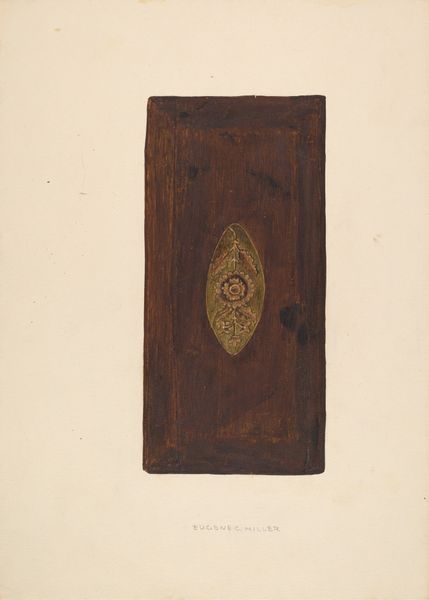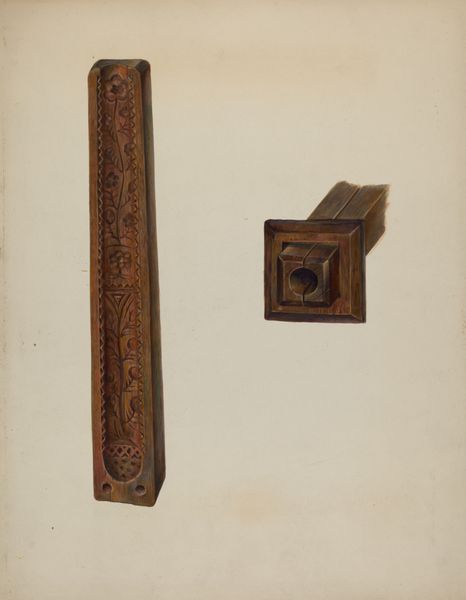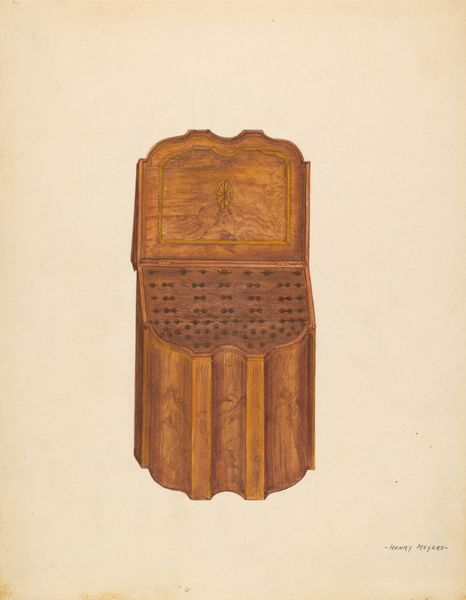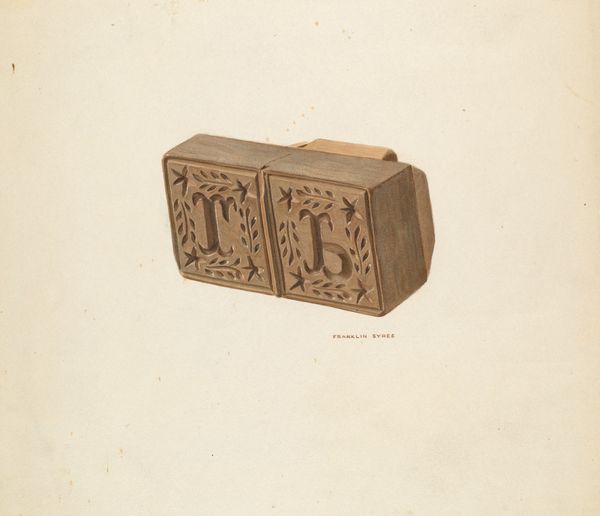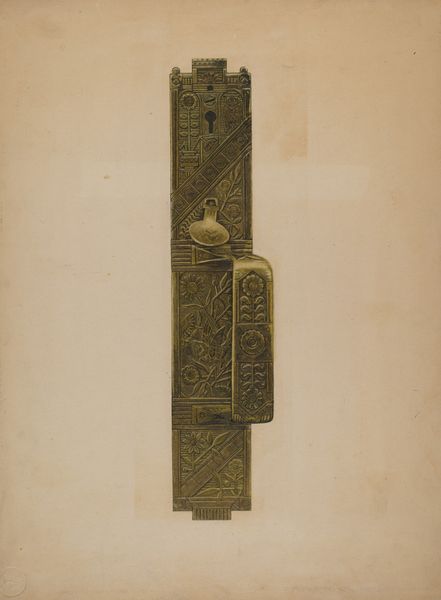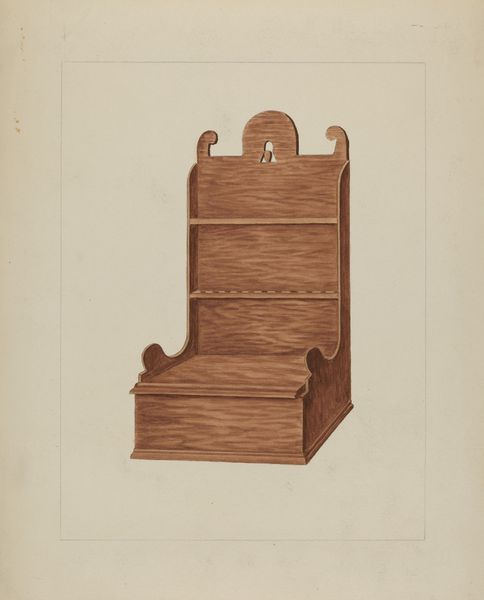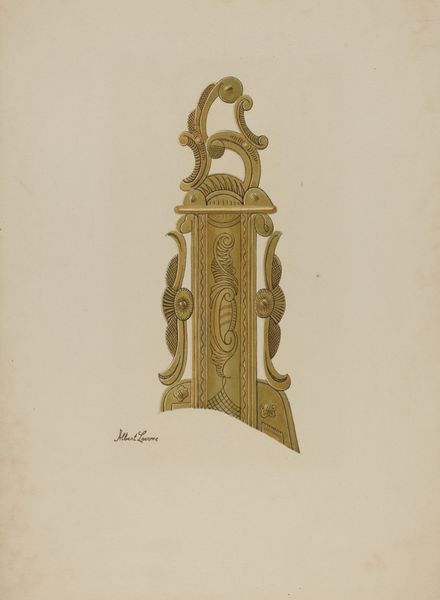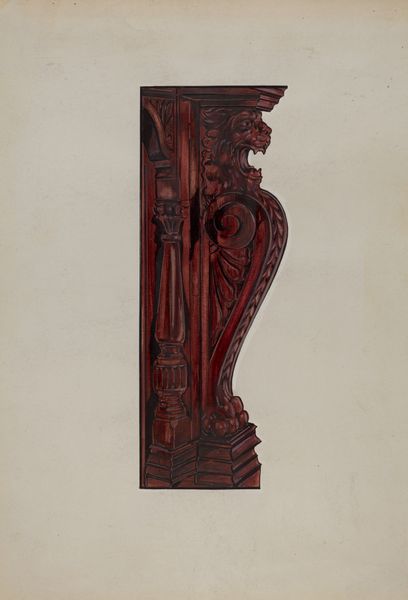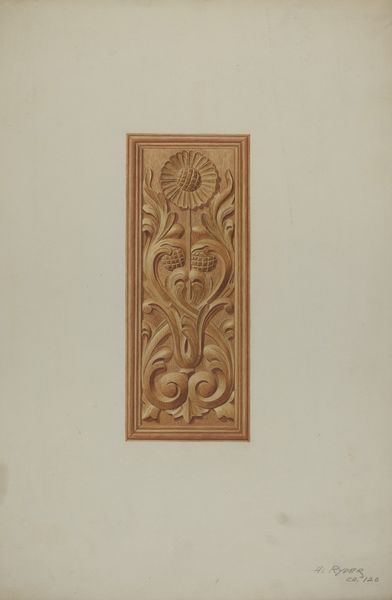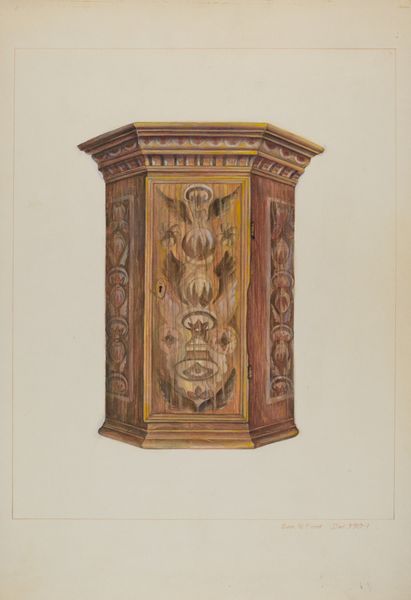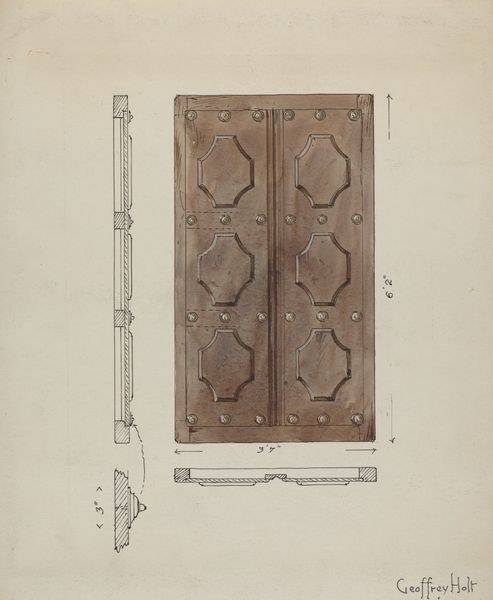
drawing, paper, watercolor
#
drawing
#
water colours
#
paper
#
watercolor
Dimensions: overall: 38.2 x 28 cm (15 1/16 x 11 in.)
Copyright: National Gallery of Art: CC0 1.0
Editor: This is a watercolor on paper, depicting a "Zoar Pottery Roof Tile," around 1941, by Ralph Russell. It feels quite stark. The tile itself has the year 1832 inscribed, with other lettering on top, perhaps initials? What’s striking is the simplicity of form against the suggestion of its history. What do you see in this piece? Curator: I see an object fraught with layered meanings. We must consider this tile not simply as a functional object, but as a cultural artifact representative of the Zoar community. A German Separatist group seeking religious freedom. Editor: Religious freedom impacting roof tile designs? Curator: Exactly! Their communal living structure, striving for self-sufficiency and distinctive aesthetic values are encoded in everything they produced. What does it mean for Russell, working a century later, to choose this particular object for artistic interpretation? He made a conscious choice to depict a remnant of a utopian experiment, doesn't this speak to larger narratives of identity, labor, and the longing for alternative ways of organizing society in the 20th Century? What might a roof tile mean to a community, versus to an individual observer much later? Editor: So the act of choosing *this* object elevates it to a symbol. What does the tile being incomplete say? Curator: The fragment underscores ideas about permanence versus impermanence. It allows us to consider larger issues concerning preservation and loss when considering marginalized communities and histories. How do we assign value and ensure their narratives endure? Editor: I hadn't thought about it that way at all! It's much more complex than just an old tile. Curator: Precisely. The artwork prompts questions about cultural legacy, individual interpretation, and collective memory, even through something as seemingly mundane as a roof tile fragment.
Comments
No comments
Be the first to comment and join the conversation on the ultimate creative platform.
